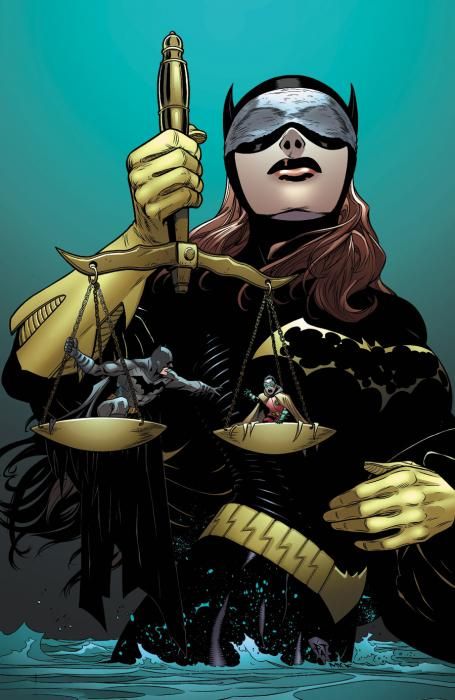"Batman and Robin" continues its run of retitled issues (with various guest-stars subbing in for Robin) with "Batman and Batgirl" #21, courtesy Peter J. Tomasi and guest-penciler Cliff Richards. But as the story enters the third stage ("bargaining") of the Kübler-Ross model of grieving, this neither feels like an accurate glimpse into the bargaining process, nor an issue of "Batman and Batgirl." It's just "Batgirl," really.
There's no denying that Tomasi writes a good Batgirl. "Batman and Batgirl" #21 follows on from events in both Batgirl's title as well as the "Death of the Family" crossover from a few months ago. Plus, of course, the book is still reacting to Damian's death over in "Batman Incorporated." That's three entirely different stories to connect to, and it's to Tomasi's credit that he not only does so in a smooth and inviting manner, but also finds a way to get into Batgirl's head for all three. Her monologue while watching her father feels almost like it belongs in her own title rather than here -- her confession is an important one -- and I appreciate that she's more than just an obligatory walk-on. Likewise, Batman's confronting her over having removed the Bat-symbol from her costume (which happened in "Batgirl") happening here instead of there is a little surprising, but it fits in well with the greater scheme of things. It's a well-written reaction, and it matches the mood we've seen of Batman as he continues his descent.
While the five stages of grief worked well as a framework for the previous two issues, I wouldn't have even remembered that bargaining was third if it wasn't for the title of the comic ("The Bargain"), based on this issue. I felt like Tomasi is just paying lip service to the idea of bargaining here, and instead is focusing more on Batman's growing aggression and anger. That's not a bad idea, though; I think this turns out better than an actual bargaining story would have ended up. It is a peculiar choice to have made, though, and it does make me wonder why to stick with the Kübler-Ross model at all if it doesn't fit with the story you want to tell.
Richards is an artist whom I feel is best when he's not a fill-in artist, and has had more time to ease into the title. "Batman and Batgirl" #21 ends up being a mix of strong and weak pages, artistically, and that's a shame because the good ones remind how it could have looked from start to finish. The two-page spread where Batgirl records Batman's attack is an example of when the art looks good; Batman elbowing the hoodlum in the face looks natural and fluid, his body is filled out but realistic, and Batgirl's expression as she turns off the recording feels appropriately worried and scared. Compare that to when Batman's standing in front of the shattered storefront glass as someone calls out, "It's him!" Batman not only looks stiff and posed, but the way his arms are held up looks more like a bad action figure than anything a character would actually do. The two pages of panels where Batgirl's watching Gordon are equally frustrating; when Gordon blows on one of the pieces of his gun it initially looks like he's pulling a piece of chewing gum off of it with his teeth, and Batgirl's expressions here are flat and unemotional even as the dialogue indicates it should be otherwise.
"Batman and Batgirl" #21 is an uneven but not bad comic. It's definitely one that focus more on Batgirl than its co-lead, and the art varies from unimpressive to good. Ultimately the good parts more than outweigh the lesser ones, but I'll be glad when Patrick Gleason presumably returns next month. The next stage is depression, and with Catwoman getting the co-star position, there's a lot of potential ahead.

